On Monday evening, AC Milan kicked off their 2023-24 Serie A campaign with a 2-0 away win against Bologna at the Stadio Renato Dall’Ara.
Christian Pulisic got his first Serie A goal less than 10 minutes later, rocketing a strike inside the far past from outside the box after some neat interplay with Giroud.
The second half was much more measured from the Rossoneri though they did have chances to inflict an even heavier defeat on their hosts.
Nonetheless, they kept pace with the other rivals in Inter, Napoli and Juventus who all also won. Here’s @Tactics_Tweets tactical observations from the game…
Set-ups
Stefano Pioli lined up his side in a 4-3-3 system on paper but with certain positional adjustments depending on whether Milan were in or out of possession. The team’s shape also slightly altered depending on which area of the pitch play was in.
As seen during preseason, when the Rossoneri were in possession, in particular during their build up play, one or both of their fullbacks (Davide Calabria and Theo Hernández) would invert into central areas of the pitch alongside Rade Krunić.
This allowed the two midfield 8s, Ruben Loftus-Cheek and Tijjani Reijnders, to both 1) advance higher near the forward line of Christian Pulisic, Olivier Giroud and Rafael Leão, and/or 2) pull out wider towards the flanks (spaces the inverted fullbacks had vacated) to help the side progress possession upfield from deep.
See visual below for an example in practice of these positional adjustments during build up in the opening stages of the game.
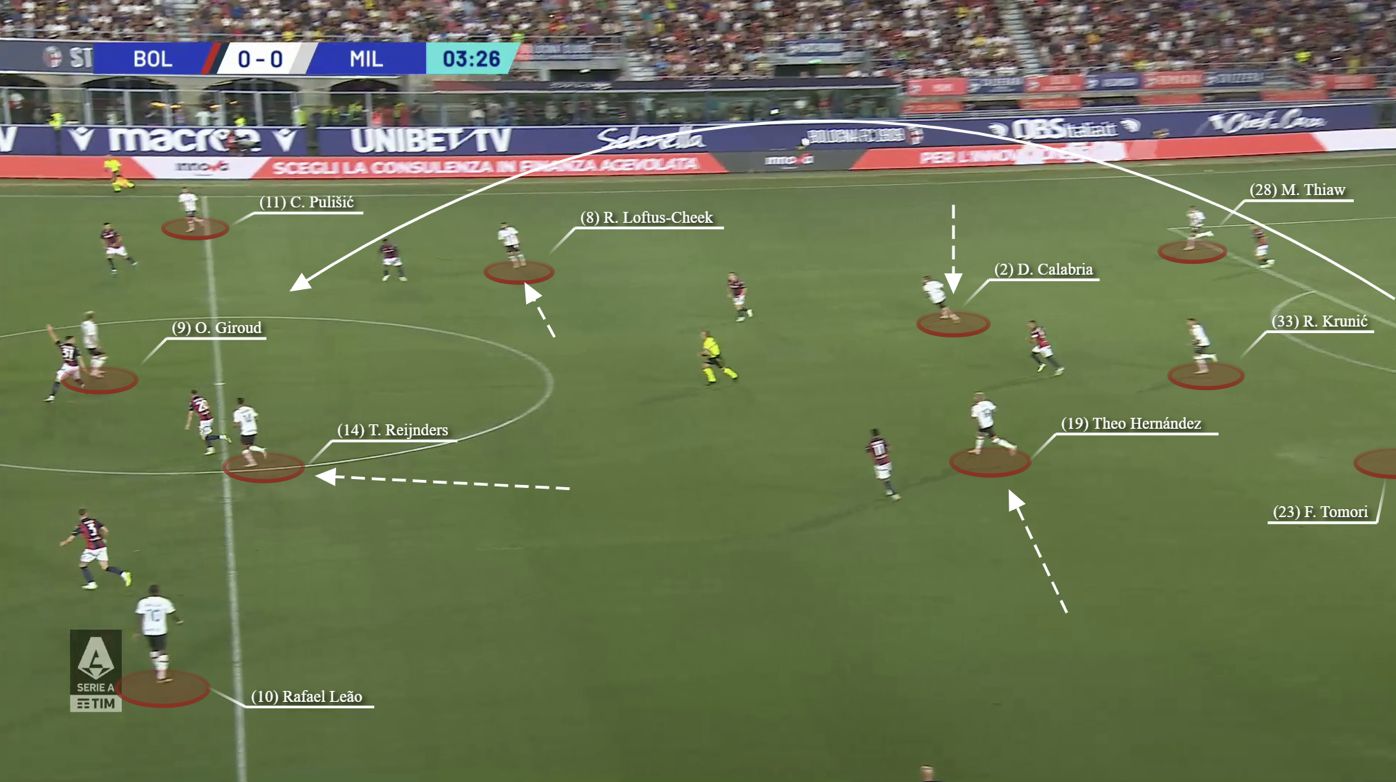
Out of possession, Milan’s shape would adjust depending on whether defending high up the pitch, in the middle or lower towards their own third. When Bologna tried to play out from the back, Reijnders pushed up alongside Giroud to help engage the opposition backline, forming a 4-4-2.
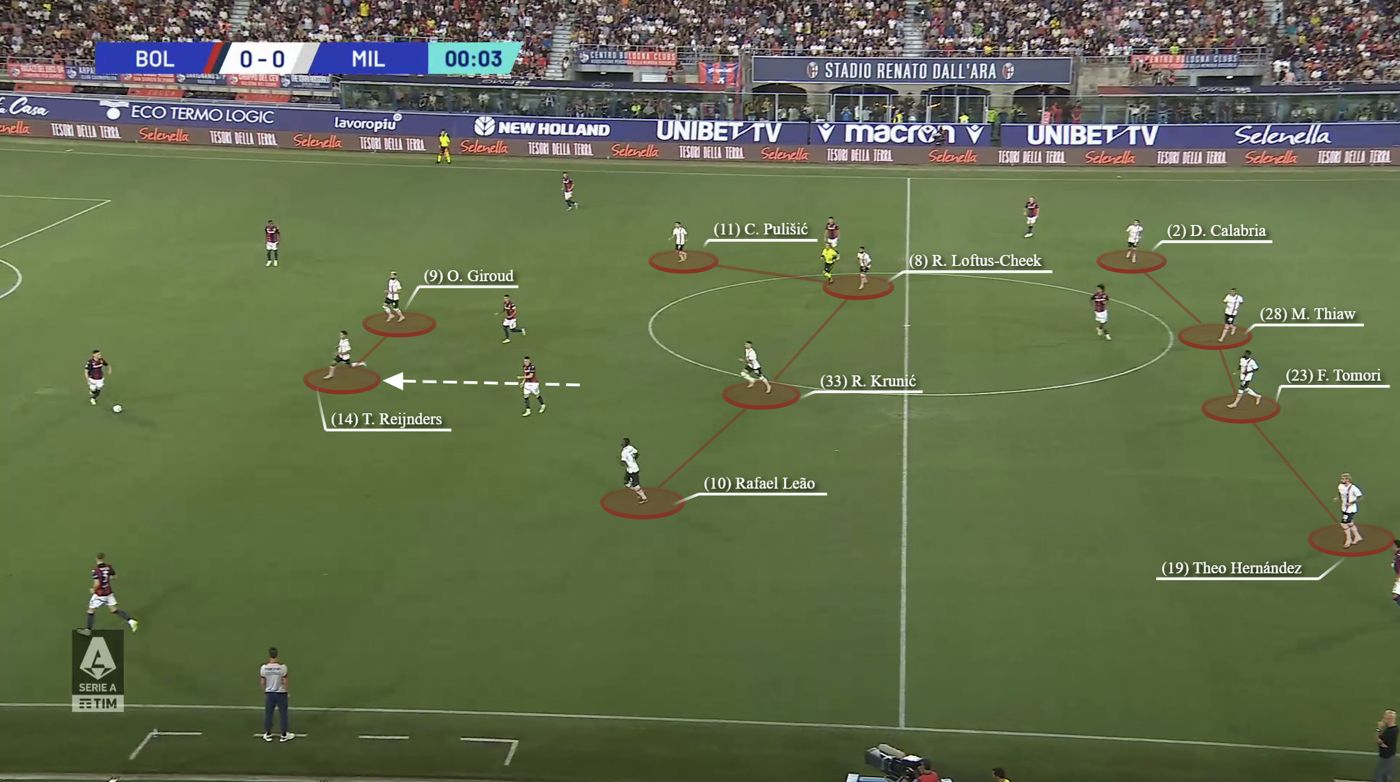
Then, as the home side progressed into the opposition half and towards the Milan penalty box, the away side gradually dropped into variations of 4-2-3-1, 4-1-4-1 and 4-4-1-1.
Regardless of the actual formation label, Milan’s aim without the ball appeared to be vertical and horizontal compactness. Although this was not always achieved, it was neither punished.
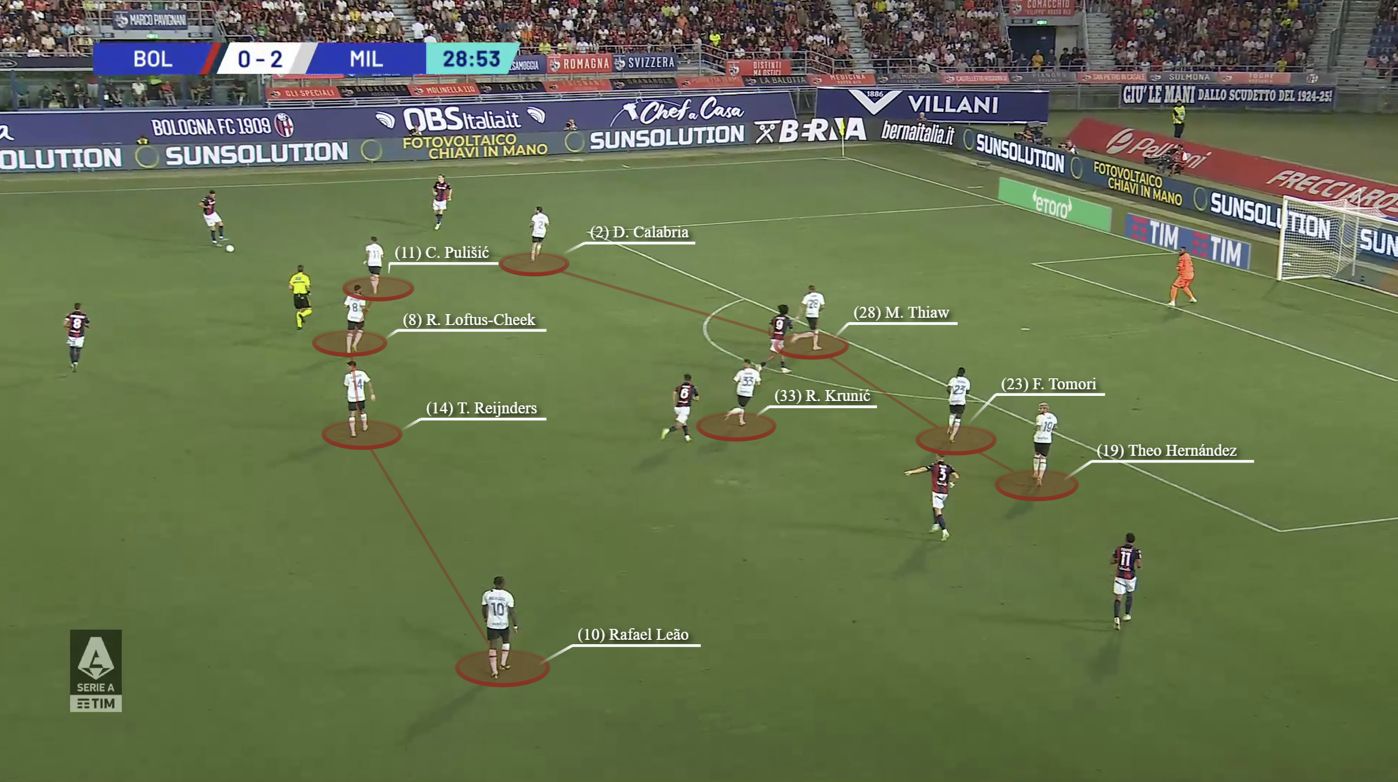
From a Bologna perspective, Thiago Motta’s side were equally interchangeable with and without the ball. In possession, the home side used a lot of positional rotations in an attempt to disrupt the Milan defensive structure and progress the ball through the thirds.
Out of possession, when defending higher in the Milan half, the Bologna players each had an initial designated opponent they were tasked with covering, with additional zonal responsibilities as the team dropped to protect their own goal.
Turning strengths into weaknesses
Whilst Bologna’s style of play contributed to their overall competitiveness in this match, it also consequently played a role in Milan securing the victory.
After the opening exchanges of either side figuring the other out, Milan began to find solutions to overcome and exploit the home side’s approach, both in and out of possession.
These solutions included; 1) taking advantage of vacated space in attacking transitions, 2) linked to the previous point but warrants a standalone mention too, ball carriers, 3) Mike Maignan hitting long passes to bypass the Bologna high block, and 4) manipulating the Bolona player-oriented pressing scheme.
And the first goal, in the 11th minute, was a prime example of Milan turning a Bologna strength into a weakness. Less than a minute before the scoreline turned 1-0, Bologna had the ball deep in their own third.
The home side successfully played through the Milan high press, then switched play to their left wing before entering the final third as a unit. The whole team pushed up the pitch together to try and sustain the attack in the opposition half.
However, as would be an ongoing storyline throughout the game, whilst the home side showed qualities in successfully working the ball through the thirds, they lacked quality actions in the final part of the pitch to create and finish attacks.
In the screenshot below, after entering the final third, Bologna attempted a pass into Joshua Zirkzee’s feet but Malick Thiaw intercepted and the ball fell to Krunić who then quickly found Loftus-Cheek…
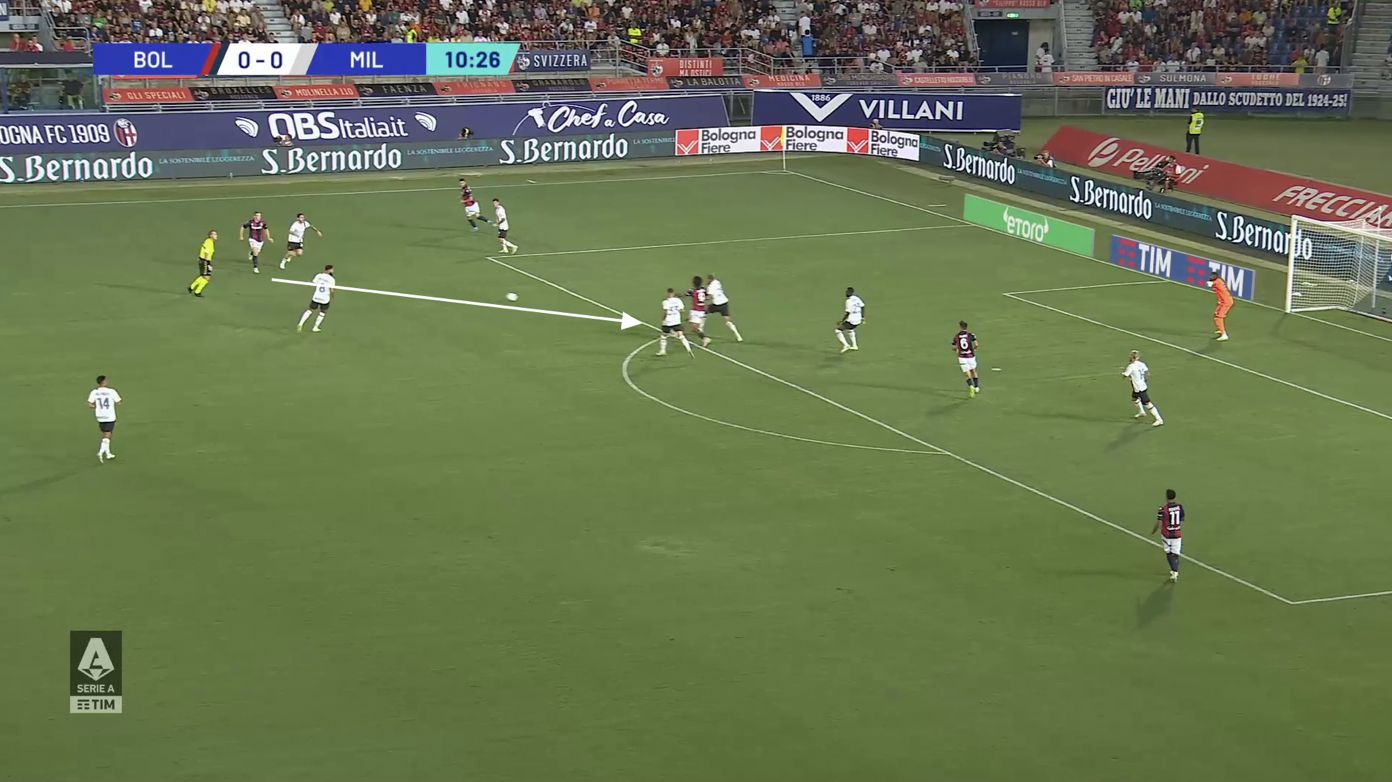
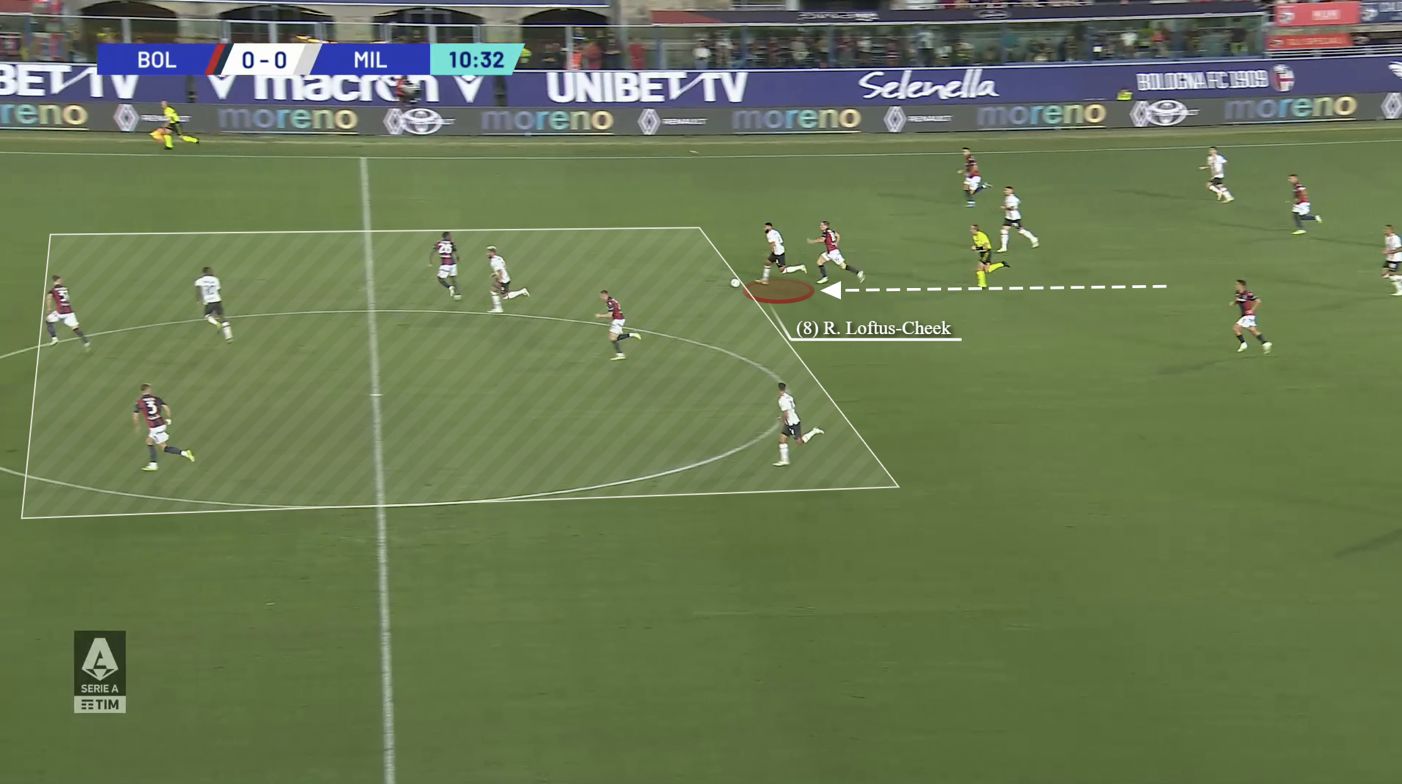

…who then passed to Pulisic. But as you can see, Bologna players have been able to retreat back into their low block.
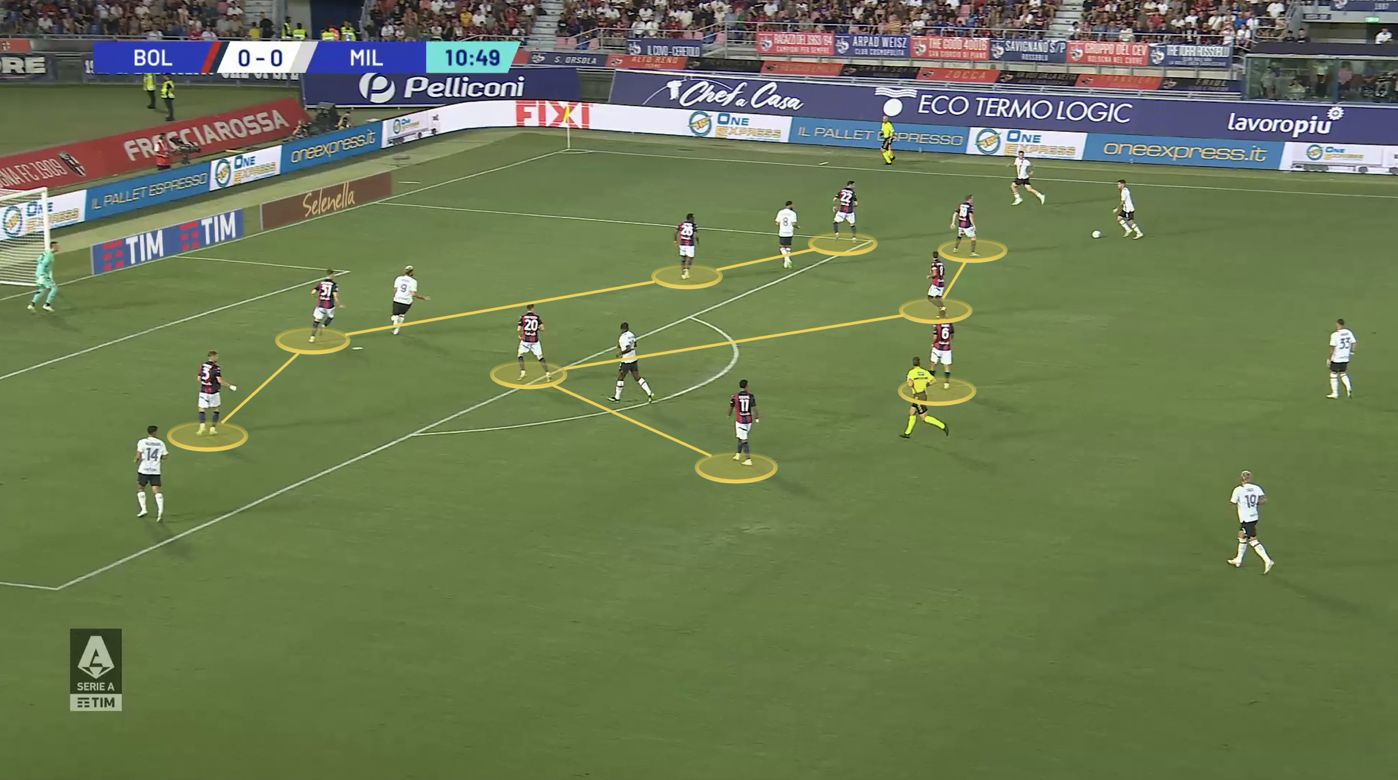
Secondly, the Bologna right-back appears oblivious to Reijnders blindside run so the Milan midfielder is able to connect with the ball and divert back across the face of goal for Giroud to side-foot into the back of the net.
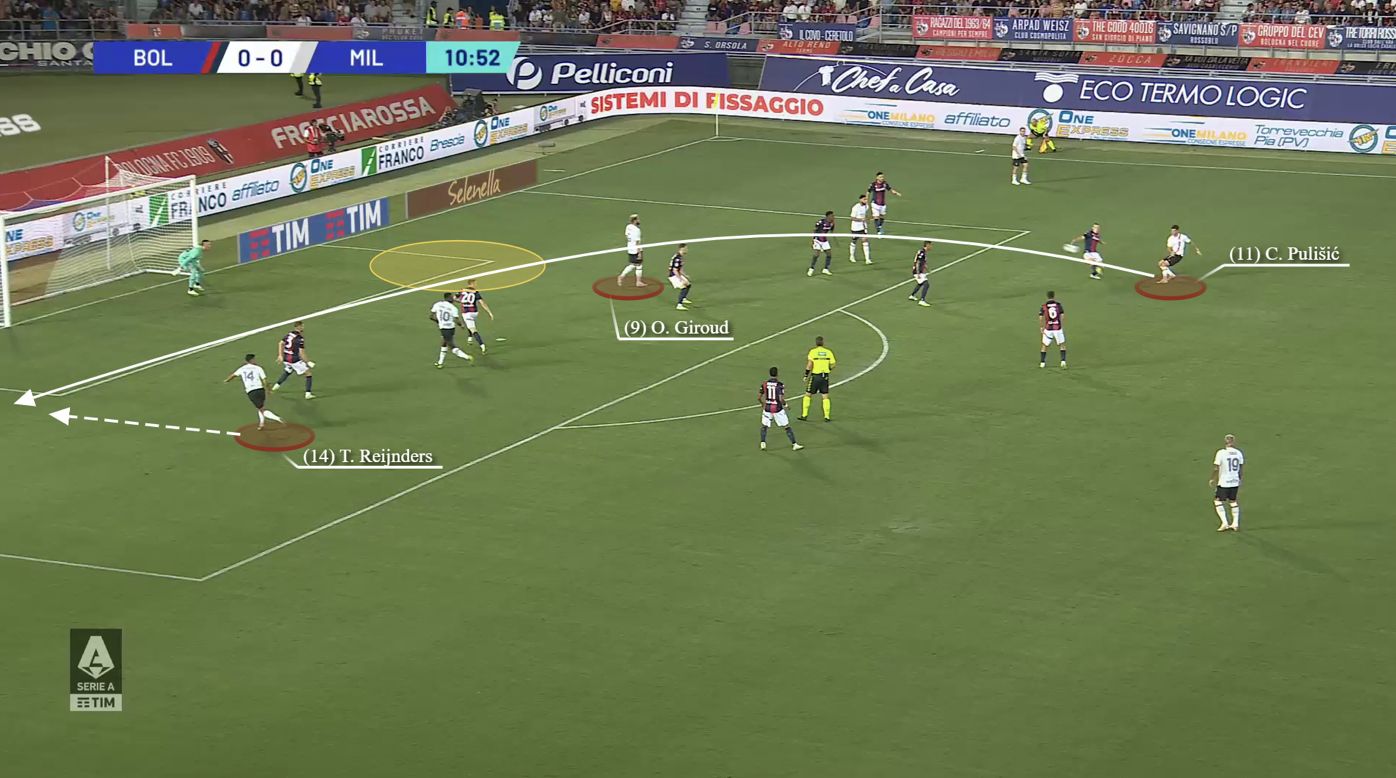
And Milan’s second goal – which would be remiss not to predominantly attribute to Pulisic’s quality ball strike – also had an element of this territory shift, as it started with deep possession and then a long pass into Giroud.
This concept of long passes and shifting territory quickly, also nicely leads into another example of a Milan solution to overcome and exploit Bologna’s approach – Maignan hitting long passes to bypass the Bologna high block.
According to FBRef, the Milan goalkeeper attempted 21 launched passes (passes longer than 40 yards) against Bologna, whereas his per 90 league average last season was just 8.77. This tendency for longer passes from their goalkeepers was highlighted during preseason. One of the reasons / benefits of Milan inverting their full-backs in build up is to bait the opposition high and then bypass their first lines of pressure with aerial passes towards the Milan forward line – who may be in 1v1 opportunities against disjointed defensive structures.
And against Bologna, this was certainly a repeated tactic. Here’s an example from the first half where as a result of Bologna’s player-oriented high block, Maignan decides to attempt a long (launched) pass…
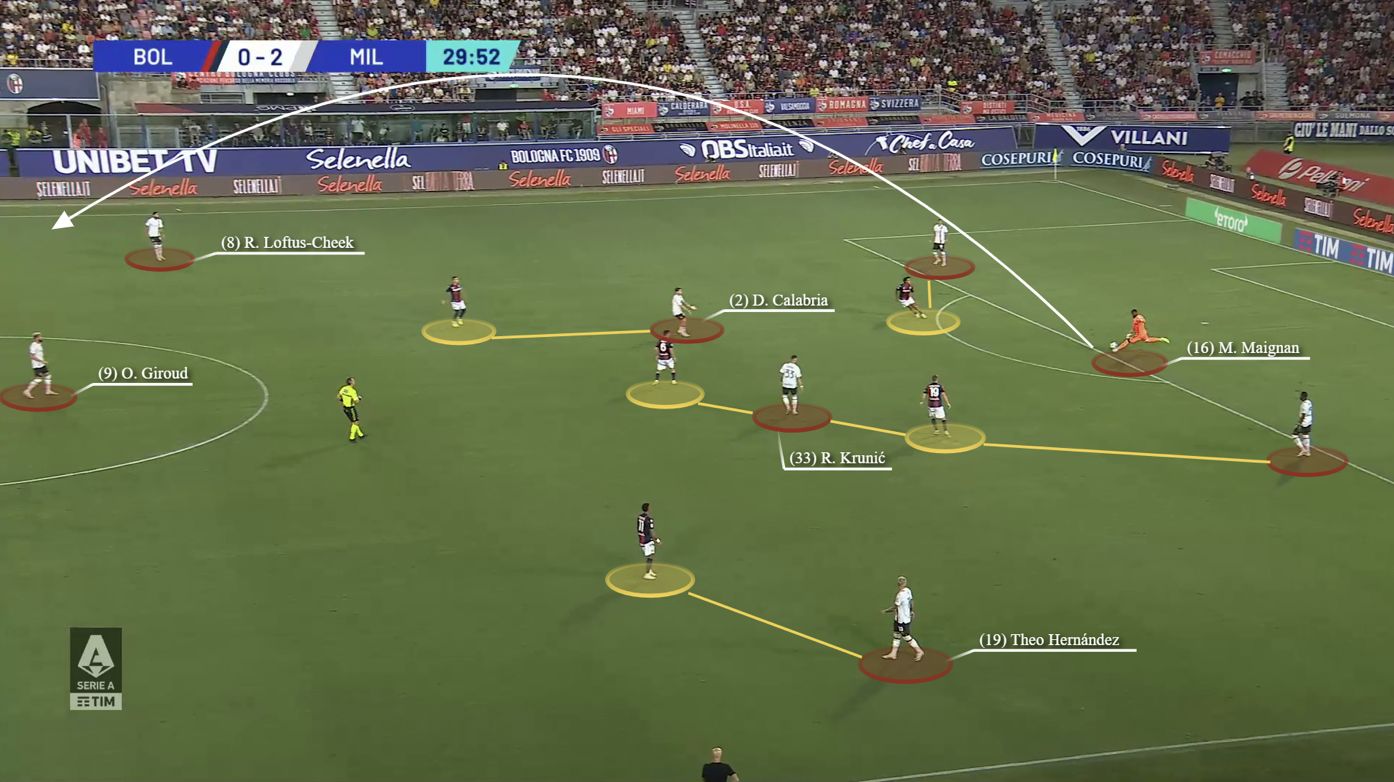
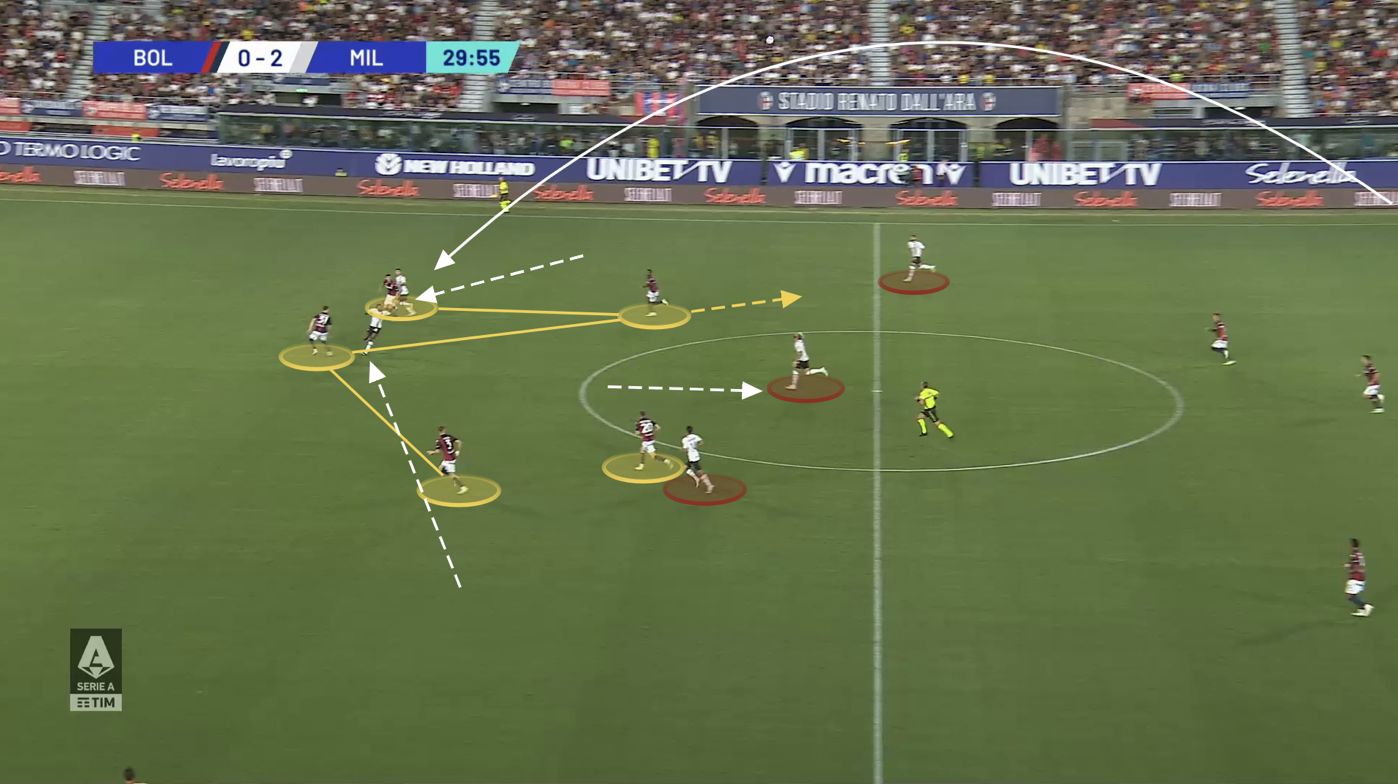
In this situation – and as was common in other similar scenarios – Giroud has dropped short in an attempt to either be a target for the long pass and/or draw out a central defender. Loftus-Cheek’s wider positioning has prematurely forced the Bologna left-sided central defender, Jhon Lucumí, to jump out of the defensive line to cover him (his responsibility in their high press). And making coordinated opposite movements to Giroud are Pulisic and Leão who in this sequence have a 2v2 opportunity.
Whilst the above example did not result in a goal nor attempt, it did allow Milan the opportunity to bypass the Bologna high press and progress the ball into the opposition half. From here, Milan not only maintained settled possession, but they also forced Bologna back into quickly retreating and consequently covering large distances at speed.
In the first half especially, Milan’s aforementioned solutions – attacking transitions, ball carriers, hitting long passes to bypass the high block and manipulating their pressing scheme – not only helped contribute to their goals and chance creation, but also frequently forced Bologna to retreat. This regularity of covering large distances appeared to tire the home side, thus reducing their intensity both with and without the ball.
In the second half, not a lot changed. In the opening 15 minutes, possession constantly turned over from one side to the other. Milan initially showed poor practice in game management and Bologna seemed to be more patient out of possession and wait for mistakes in Milan’s build up (with their defenders on occasions happy to oblige).
The home side continued to find success in getting the ball up and into the final third, but they persisted in lacking the quality to finish their effective patterns of play (see Wyscout Expected Goals timeline below).
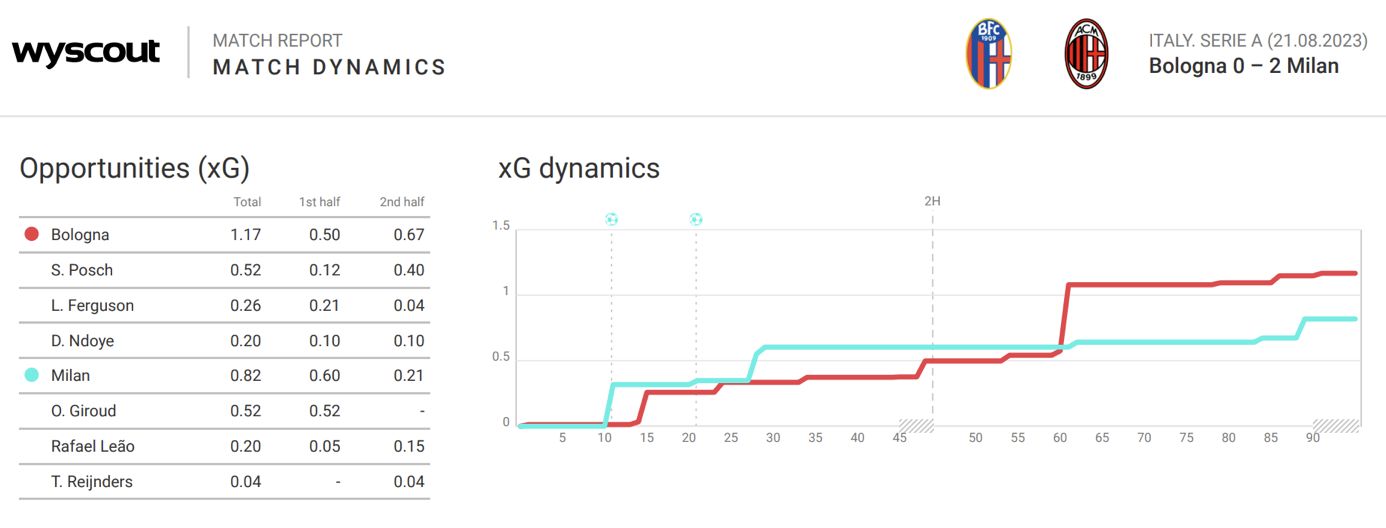
Summary
As opening games of the season go, despite Bologna’s obvious qualities, Pioli was probably thankful for the style of play match up. It allowed his new side to showcase their own qualities in getting the ball from back-to-front quickly.
Two goals in the opening twenty minutes clearly helped and gamestate was likely a factor in how the remainder of the game played out. But Milan, and their new signings in particular, will likely take confidence from the result and specific moments within the game, if not the full 90 minute performance.
There are still plenty of areas for improvement and certain preseason questions remain unanswered, but three points were secured. Up next, Torino on Saturday at the San Siro.



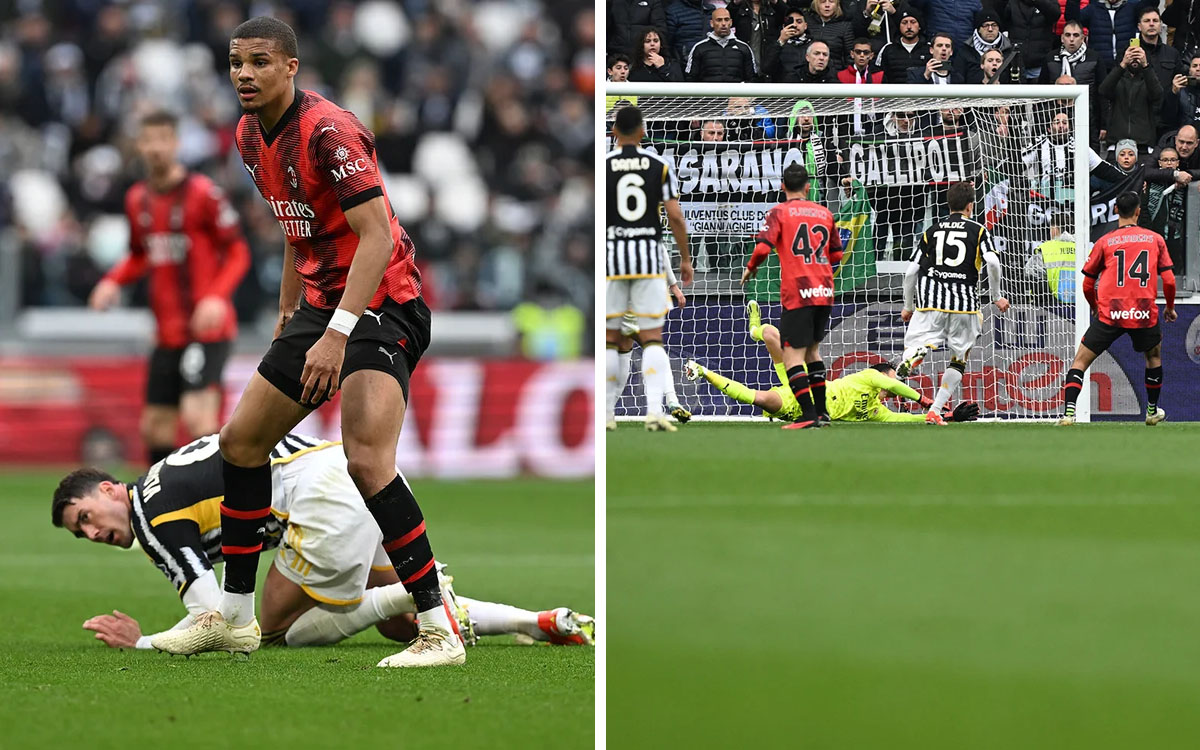
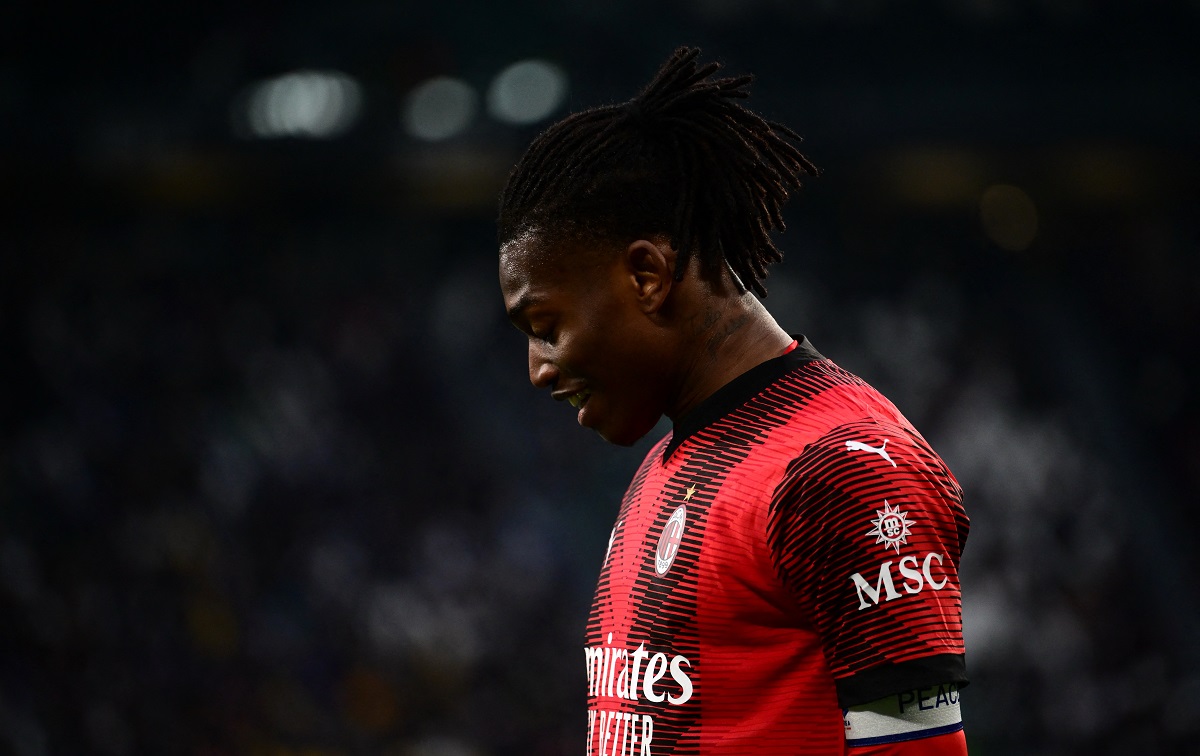
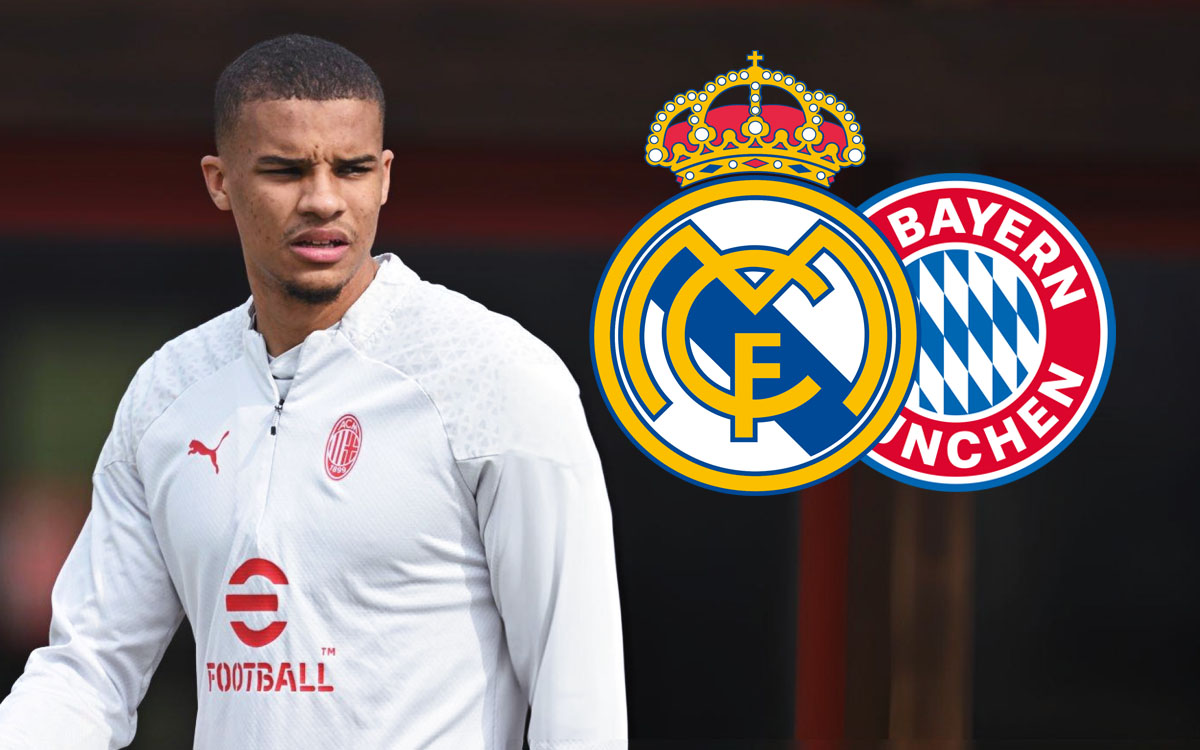
Thanks for a great analysis! Really illuminating!
Perhaps an even clearer analyses of Milans defensive weaknesses would be nice, but overall a great read!
Great read indeed!
Good analysis, but I wish you would have focused more on the defensive side because it was kind of worrisome how easily Bologna were able to pass thru our midfield and create scoring chances, especially on our right side.
Agree. You can clearly see the defence is outnumbered when the team loses possession. Any mistake leads to a goal like Capello said. I would not recommend playing that way unless late in the game when you need to win or draw a game. Also Bologna dominated possession.
their entire offensive structure is built around this tactic so the fact that it held up is a good sign. They try to get the press as high up as possible and practice various movements to free up either a deep wingner or switch of field…
Yes a great read very interesting and informative.
What I will say is that ,it was a great result against Bologna…many teams will go there and lose games !
So pleased with the team overall and especially that of Olivier Giroud and Pulisic who seem to already have a good understanding ,great link up play between them .We will score goals this season for sure ..
So I expect goals to come from Giroud,pulisic and Rafeo leao ..so a great 3 points ..I expect the same against Monza ,and yes that man Olivier Giroud to score again ..So 6 points two games .
I really do think we have a good chance to challenge for the scuddeto again this season ,but of course we will need to use certain players wisely..We have a great squad and we must rotate from time to time .
I have great confidence in our team and our manager pioli ..
Sorry an error I meant against Torino ,,not against Monza ..it’s the early season excitement and high expectations getting to me ..so it’s 3 points against Torino ,and yes still that man Olivier Giroud to score .
So yes 6 points two games .